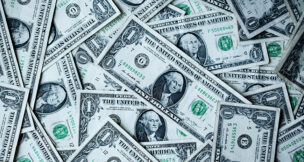Recent Articles from Gary Weiand
Wikle’s Stationers
The happy pair cuddling under the neckers nook sign are John Marion Wikle (sounds like cycle) and his wife Margy, born Margy Lee Standage. Though this late ‘20s photo was taken in Los Angeles, John and Marion were Phoenicians who from the late 1930s to the 1970s owned and operated Wikle’s stationery store, a fixture in downtown Phoenix for 60 years.
The Priests of St. Mary’s
This photo, taken in 1958, shows a number of prominent priests standing in the doorway of St. Mary’s Church rectory at Monroe and Third Streets. The occasion was the 25th anniversary of the ordination of Father Gilbert Zlater, the first St. Mary’s “boy” to become a priest and the first Franciscan from Arizona.
Gold’s 1912 Buick Racer
Martin Gold arrived in the Valley around 1880 after emigrating from what was then the Austro-Hungarian Empire. Gold was part of a generation that seemingly lived to work, and in less than two generations, the efforts of men like him transformed a wasteland into the city of Phoenix.
Cornforth’s Home and Auto Appliance
These photographs from the 1950s show Cornforth’s Home and Auto Appliance, one of Phoenix’s few local business to survive through the millennium.
Pastoral Phoenix
These two photos were taken in 1915; one from a field on Sixth Avenue near what is now Chase Field, the other, somewhere on the Salt River. In 1915, Phoenix was enjoying the last years of the “Gilded Age,” an opulent time that was vanishing everywhere else in the world.
Agua Caliente
In 1915, Louis Killeen outfitted two cars and left Phoenix for a two-day drive through the desert to Agua Caliente Hot Springs resort, the ruins of which still stand 30 miles west of Gila Bend, off Interstate 8.
Frank Barrios, World War II
This photo shows a residential part of downtown Phoenix as it was in 1945, when even very fine homes had chickens in the back yard.
Rifleys — Father and Son
This photo, showing father and son in boxing gloves, was taken in Phoenix about 1922. It reflects Jack Dempsey’s dynamic effect on American culture. A comparatively small man, Dempsey electrified the nation in 1919 by winning the heavyweight championship, knocking out the gigantic Jess Willard in just three roundsc — an event that launched America’s Golden Age of Sports.
The Valenzuelas of Phoenix
On Sept. 15, 1918, a young soldier, who expected momentarily to be sent overseas to fight the Germans, had himself photographed at Camp (now Fort) Dix, New Jersey, and sent the result on a postcard addressed to Rosa Gold of Phoenix.















